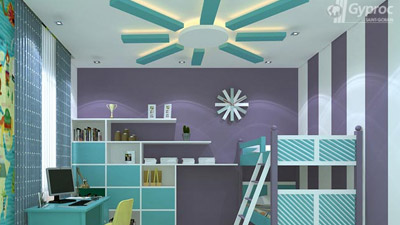
- Homeowners
- Professionals
- Products
- Back
- PlasterBoards
- Metal Framing & Accessories
- Jointing and Finishing
- Gypsum Plasters
- Ceiling Tiles
By material Type
By Category
- Resources
- About
- Careers
- FAQ's

Date: 23 April 2020
Industries like energy, automobile, IT and biopharmaceuticals have adopted the green concept. The construction and interiors industry too, is striding towards sustainability with ecological practices implemented while designing spaces.
In today’s progressive world, people take pride in their lifestyle and the luxury they own. But we are also increasingly, becoming aware of the impact our actions have on the environment and future generations. With the growing effects of climate change, it’s time we make a sustainable way of living the key to our existence. But what is sustainable living? Preached by many practiced by few, sustainable living means to live in a synchronized manner without disrupting the course of the Earth. It attempts to reduce the consumption and stress of Earth’s natural resources and one’s personal resources. Development in the present without harnessing the future assets or without basically harming our future is high priority.
But can sustainable living be brought into how we plan our housing? The answer is yes! Sustainable living is essentially guided by four principles - minimizing waste, limiting the use of Earth’s natural resources, wise use of the environment, and ensuring quality working/living environments – which can be easily incorporated in our housing plans as well. Many interior designers and architects these days impose tremendous emphasis on sustainability when building and designing spaces and encourage consumers to build ecofriendly surroundings. Sustainable housing helps to not only bring about a change in the way we live but also attain as a better and healthy future.
So how can one make their house sustainable? What are the things that will help people move towards sustainable housing?
Design for energy eco-efficiency
Energy conservation and a zero-waste lifestyle are key to sustainable housing. When designing a space try and incorporate elements that help reduce waste and consume only the necessary amounts of energy. Some examples of this are the use of energy saving LED lights, solar panels to generate power & electricity, organic paints that are made with natural raw materials and building materials like gypsum that’s are recyclable and have environment friendly properties.
Design for low environmental impact
The millennial generation want affordable functional spaces that offer comfort without compromising on design or affecting the environment. One of the big trends catching on among designers is minimalism, which not only declutters a space but also helps to project a small space look bigger and spacious. Similarly, reduce, reuse and recycle and do-it-yourself (DIY) are other trends that have propagated among young home owners. Use of multipurpose solutions like drywalls which help in partitioning a room into two, saves not only the cost but also the materials used to build another separate room. Drywalls are also flexible in nature, faster to construct and easier to build than brick or cement walls.
Design for durability and flexibility
Investing in a home is typically a one-time investment as there is a lot of thinking that goes in while buying a house. The goal of designing for longevity is to create durable and timeless spaces and reduce the need to change the whole design every couple of years. The best way to achieve timelessness is to choose quality over quantity, and simplicity/functionality over embellishments. Technology and innovations have led to designs that can be modified to create bigger spaces. For example, adjustable and modular furniture like Sofa cum beds and wall mounted tables or built in shelves or mounts for TVs on drywalls.
Design for healthy environment
People spend most of their times indoors, be it schools, colleges, offices or homes. Consideration of the indoor health environment should be on the priority list for every designer and home owner. Use of material which have low emission of VOC – volatile organic compounds and other air pollutants or materials like Gyproc that have moisture resistant qualities and can absorb harmful compounds help in creating a healthy living space. The right kind of ventilation also improves the air quality of a home. To increase connectivity with nature bio-phillic designs are the way to go, however more relevant for large spaces.
Industries like energy, automobile, IT and biopharmaceuticals have adopted the green concept. The construction and interiors industry too, is striding towards sustainability with ecological practices implemented while designing spaces.
Disclaimer: The views expressed in the article above are those of the authors' and do not necessarily represent or reflect the views of this publishing house. Unless otherwise noted, the author is writing in his/her personal capacity. They are not intended and should not be thought to represent official ideas, attitudes, or policies of any agency or institution.